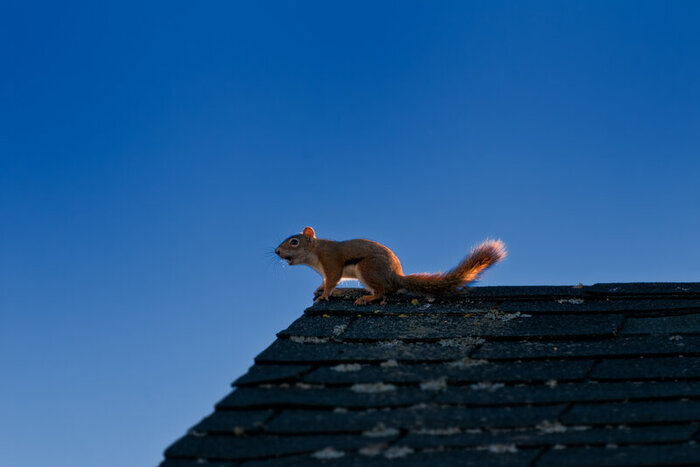
As the weather turns colder, you may notice some scratching sounds coming from the attic. Or, you may become aware of an unpleasant, urine-tinged smell in certain areas inside the home or when turning on the heater the first few times. These are signs that rodents are setting up shop in the attic for the winter.
In addition to doing significant damage to insulation, electrical wiring, and ductwork, rodents pose health threats via vector-borne diseases and compromised indoor air quality. Rodents and the pests that love them (fleas, mites, etc.) can transmit diseases to humans and their pets via saliva and droppings. Eliminating rodents from the attic is essential.
The season change from summer to fall offers the ideal opportunity to schedule an attic inspection and determine whether your home needs rodent-proofing before inclement weather makes it harder to do.
Signs of Rodent Infestations
Keeping rodents out of the attic (called rodent exclusion) is the best way to prevent infestations from getting beyond your control.
Here are five easy steps to get rid of existing rodents and block new rodents from moving in.
Rodents can squeeze into remarkably small spaces. Even a small tear in a vent screen or a structural crack can be enough to allow these flexible creatures inside. We tell clients that an opening the size of a dime - or even a bit smaller - allows mice or smaller rodents to get in. If you can put the tip of your pinky inside, a rodent can fit through it.
Inspect your house from bottom to top, locating and marking with chalk any potential entry points so you can easily find and block them later by resealing, caulking, or stuffing holes with steel wool. Pay careful attention to:
Rodent exclusion is the most proactive way to prevent rodent takeovers in any home's attic and interior wall spaces.
Rodents are dexterous leapers. They confidently jump surprising distances (even as far as 8 feet down!) from the branch of a tree or shrub and onto a window sill or rooftop. From there, they can easily access any hole or crack you missed when performing DIY rodent exclusion.
Hire a crew of landscaping experts to assess your home and then remove, trim, and prune landscaping trees and shrubs accordingly. In addition to preventing rodents from accessing the attic, seasonal pruning and trimming make for a more fire-resistant home.
Odds are your electric, cable, or phone lines run directly from a utility pole to the exterior of your home. Unfortunately, these lines create a superhighway for rodents. A roof and attic inspection are essential to ensure any rodents that travel the wires have no way into the attic.
If you’re seriously committed to keeping rodents out of your attic, use a product that deters rodents (like Critter Guard’s Line and Pole Guards) from climbing and traversing utility poles and wires. They are relatively inexpensive and last for many years. Depending on the circumference, you can also use Critter Guard products to prevent rodents from climbing up tree trunks.
This is a hard one because it never feels good to kill an animal. However, trapping may be necessary until you’ve completely sealed your home and eliminated existing rodents. We do not support the use of rodent bait or poison as it harms the entire food chain - including your beloved cats or dogs that are likely to kill and eat an ailing rodent. Sticky glue traps are also extremely inhumane.
Instead, we tend to use clean, safe traps like This One. Here is the key; mouse traps are only as good as their location. Mice and rodents tend to run along the wall edges. So, place the open mouth of a set trap against the wall in locations where you’ve seen mice droppings or activity. Dispose of dead mice in the trash or compost pile (typically, crows, ravens, or other scavengers will eat them or take them away within hours).
Keep traps clean and re-set. Check them regularly. Typically, activity ceases after a few mice or rats are trapped because the rest of the “family” seems to figure out this is not a safe place.
It’s not always easy to perform DIY rodent removal and prevention, especially in larger or multi-story homes. If that’s the case for you, connect with a professional rodent solutions company that can do the work for you.
Ready to rodent-proof your attic? Schedule an appointment with Attic Solutions. We have decades of experience eliminating rodent infestations, cleaning and sanitizing the attic, and using rodent exclusion measures to keep new rodents from getting in.